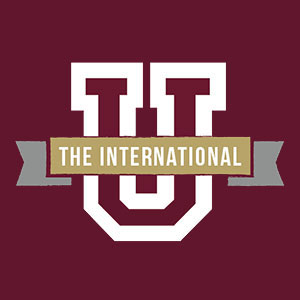New Restructuring of Colleges Provides Benefits to TAMIU

One tends to think of a university as stable, unchanging, a paragon of solidity. But Texas A&M International University continues to grow and change, accommodating the needs of the present and its vision for the future.
Recently, TAMIU's College of Arts and Humanities and the College of Science and Technology were combined to form a new unit: the College of Arts and Sciences.
Dr. Dan Jones, provost and vice president for academic affairs, explained this new arrangement was necessary for several reasons, and will provide many benefits to the University.
"The first reason for the change was a certification issue. The Dr. F.M. Canseco School of Nursing previously was under the College of Science and Technology. However, the Board of Nurse Examiners for the State of Texas said in order for the School to maintain its certification, the School's director would need to report to a vice president, rather than a dean," said Dr. Jones, "Now the School of Nursing reports to my office. The Board's request was to ensure the School of Nursing has access to the resources it needs to be successful."
After the School of Nursing became a separate administrative unit, the College of Science and Technology consisted of only one department, the Department of Natural Sciences.
"This was too small to justify a whole college. If we kept it that way, science, math and technology would always be second in line for resources due to its size, " explained Jones.
Therefore, the department was divided into the Department of Biology and Chemistry and the Department of Mathematical and Physical Sciences, and the two colleges were combined, creating a fairly typical grouping of departments, according to Jones.
"Arts and Sciences is a very traditional grouping, found in many universities. This structure groups traditional liberal arts disciplines into a single administrative unit. It's the college where all the core curriculum is housed; it has the traditional academic disciplines such as humanities, liberal arts, mathematics, languages, and social sciences As with many universities, Arts and Sciences is the largest college now," said Jones.
He said in addition to reducing administrative costs, requested this past Spring by the State Legislature, the combining of the Colleges offers a unique opportunity to faculty members.
"Faculty from other disciplines can interact and collaboratively help each other build stronger programs. In addition, they can help one another with grant writing, in which traditionally the sciences are more involved. Getting the science faculty in closer proximity with faculty from other disciplines will benefit all and create grants that are likely to be funded," Jones explained.
In addition, Jones believes that having most of the academic areas concentrated in one College will help the University deliver quality teacher education.
"Teacher education is a big part of the TAMIU mission, and we have a separate college for that. Because there's more emphasis on content rather than pedagogy now, it's very important the College of Education work closely with other academic areas. Having most of the academic areas of study in one college makes it easier to coordinate and offer review, so that the students get all the preparation they need," explained Jones.
He said that while the process of merging the Colleges was not without difficulty, things have gone rather smoothly.
"One obstacle we overcame was hiring two department chairs quickly. We were able to have both Dr. Dan Mott and Dr. Eng-Bing Lin start in time for Fall 2003," said Jones.
For the future, Jones sees many exciting things coming for TAMIU, including the PhD in International Business, and possibly the creation of a College of Nursing, although that remains in the distant future.
He acknowledged that combining the colleges was an unusual action.
"It's not the kind of thing that happens every day. I credit Dr. Keck and the rest of the administration for remaining open, receptive and flexible and not being afraid to try different things. Often, institutions can get locked into certain ways of doing things. One of the things that's nice about TAMIU is that it's still young and growing and changing in positive ways; that it's open to change. Although this is a major reorganization, universities that try to maintain effectiveness and responsiveness have to do such things from time to time," said Jones.
For more information about TAMIU's reorganization, please contact the Office of the Provost at 326.2240, visit offices in the Sue and Radcliffe Killam Library, room 225 or e-mail djones@tamiu.eduUniversity office hours are 8 a.m. to 5 p.m., Monday through Friday.
Journalists who need additional information or help with media requests and interviews should contact the Office of Public Affairs and Information Services at pais@tamiu.edu